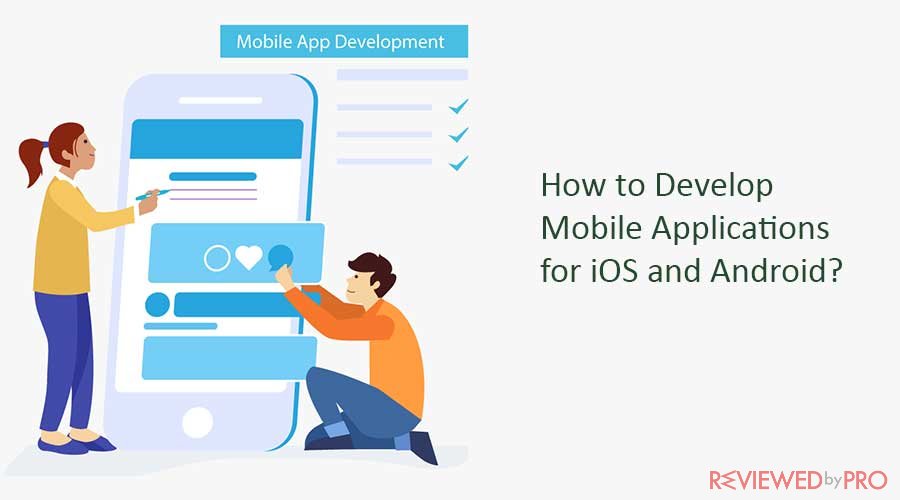
The Information Technologies field offers lots of new interesting prospects to fresh graduates. Even without any previous work experience, you can find a job that suits your interests and allows you to follow your passions! For example, in case you decide that you would like to work in IT, you can become a developer, a QA specialist, data scientist, or an engineer.
In reality, there are plenty of opportunities for you to find your passion and get amazing compensation for it. For example, application development for iOS and Android has been very popular in the last few years. Everybody enjoys playing games on their phones, and mobile applications in general have become an important part of our daily lives.
This is why you can be sure that you will definitely get a job in this field after graduation. Of course, as the demand for mobile apps increases, so does the supply of developers. You need to have a solid knowledge base if you want to gain a competitive advantage, so don’t hesitate to hire an research paper writing service for your homework! This way, you can concentrate on coding more.
In case you decided to become an app developer but don’t know where to start, this article is for you! Here, you will learn about the basics of developing mobile applications for iOS and Android, so you can use this article as a foundation for your future studies. In general, the process of creating mobile apps for iOS and Android is similar with some key differences.
Choose a programming language
This is the first step of any development process. Here, there is a fundamental difference in the programming languages you want to choose depending on your chosen operating system of your app. Let’s take a closer look at them.
For iOS development process, you might want to choose these two most commonly used programming languages:
- Swift. This is a newer language that was introduced by Apple, and it’s known for its security and simplicity of usage.
- Objective-C. This is an older language, and it’s more complicated to use, especially when you don’t have a lot of experience.
For Android developers, there are two safe choices of programming language as well:
- Java. This is a standard high-level programming language, which is intended to have as few implementation dependencies as possible.
- Kotlin. This is a newer language that was introduced by JetBrains, and it’s gaining more and more recognition because of its simplicity and compatibility with Java.
Choose a development environment
Here, you need to select a development environment. This step is not very complicated, as there are a couple of primary environments that are most common for iOS and Android devices. For iOS, you can choose Xcode. It has everything you might need to create an app for this OS. For Android, Android Studio is a perfect choice for new experts who don’t have a lot of experience.
Think about your User Interface (UI)
The user interface, or UI, is a very important step in creating your own application. This is the step where you decide what your app will look like, what features to add, and what experience your users will have in general. The tools for UI design are the same for iOS and Android. You might want to think about every detail, including icons for the store.
Here are some of the most popular instruments that can help you map out your project:
- Sketch
- Figma
- Adobe XD
Start the development process
This is the part where you execute your vision and bring your project to life. Here, you will actually have to write code and implement all of the features of your application. Here, you can use several frameworks and libraries that are the most convenient for you, and that can speed up and simplify your process.
For iOS, you can use several frameworks such as UIKit, SwiftUI, and Cocoa Touch. For Android, you can use different frameworks, including but not limited to Android SDK, Android Jetpack, and Kotlin. You might want to read up on each of these frameworks to understand their basic features and choose what’s more suitable for your project.
Perform the testing
Testing is a crucial part of this process and needs to be performed constantly even before you are finished with the coding part. You will probably get bugs and errors initially, and the coding might be a little longer than expected. If you want your app to run smoothly, you can also try to automate the testing process and save some time.
Both iOS and Android programmers can use the same project testing tools, like Appium. You can also look into using XCTest or Espresso, depending on the specifics of your app and your personal preferences. Also, it’s much better to delegate this task to a qualified QA specialist to guarantee the best result and deploy the project faster!
Deploy the application
The last step of this development process is definitely the most pleasant! As soon as you are done with testing and getting rid of the bugs, it’s time to deploy your application and submit it to the stores. This should be done so users can actually find your project and download it to their devices for further use.
This step is not so complicated when you know the procedure. For example, for iOS, you need to create an Apple Developer account and submit your project for review. Android creators have to make a Google Developer account for review as well.
Takeaway
Now you know about the six steps of developing an application for iOS and Android. As you can see, there are some similarities in this process, but you need to choose your preferable frameworks, libraries, and tools. This process is pretty complicated, so having a competent team is much better than trying to do everything on your own and turn your ideas into reality!




